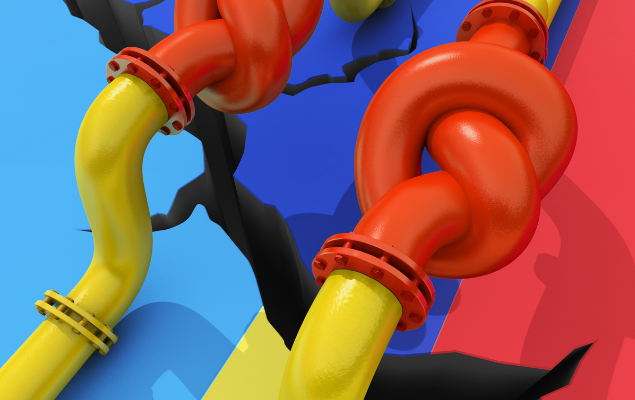The Russian invasion of Ukraine was a surprise to many in the United States. While thousands of Ukrainians continue to flee their homes, the US is among the many countries who have imposed sanctions, or bans, on businesses operating in Russia. The hope is that this sudden economic downturn will encourage Russia to vacate Ukraine and allow a return to peace.
While these sanctions are a key step to bringing a quick end to the war, they’ve caused a significant disruption to many industries around the world, including construction. Inflation, which was already affecting companies before the conflict, is expected to continue to rise, thanks to rising gas and oil prices.
Lost Gas Lines & Rising Prices
Prior to the Ukraine invasion, Europe expected the Nord Stream 2 Pipeline to open, which would carry natural gas from Russia under the Baltic sea and into Germany, where it would then be dispersed throughout Europe. However, movement on the pipeline has stopped since the beginning of the war and is not expected to be revived.
It’s no surprise that these rising gas prices will increase both the cost of shipping and using gas-run machinery, but they also affect the cost of building materials themselves. Many of the materials used in construction are energy-intensive to create, and most contain petro-carbons made from petroleum products. As the price of oil (petroleum) rises, these materials costs will also skyrocket.
Supply Chain Domino Effect
What’s more, Russia is a main producer of both copper and aluminum, which had already increased in price by 25% and 33% over the last few years. With the war and sanctions disrupting the supply chain of these common metals, both the prices and the time to get items made out of these metals are expected to rise. The cost of steel and plastic are also rising.
Construction & Heavy Equipment Impacted
So what does all of this mean for construction companies?
It means we’ll have to make important decisions about the types of projects we accept, the deadlines, and the communication with both investors and suppliers. Companies should discuss who will shoulder the burden of increased inflation, and strongly consider what they can afford before entering into any fixed price contracts.
When considering timelines for jobs, it’s wise to include plenty of additional buffer time due to account for unexpected supply chain disruptions – clients will be happy when it’s done earlier than you originally planned, but not the other way around! If possible, consider smaller projects that have more certainty of cost and less delay risk. This will give you fewer time constraints and allow you to complete your projects without being strangled by labor shortages, rising costs, and supply chain issues.
We’re in This Together
If your company is struggling to find equipment, staffing, or project management in this difficult time, Steadfast Entities, LLC is here to help. We pride ourselves on our efficiency, which keeps costs low and our customers happy. Contact us to find out more about how we can assist you today.

